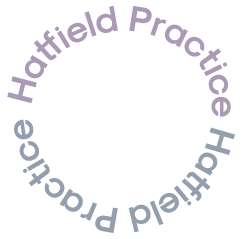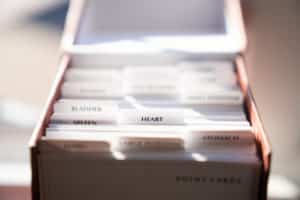“The mattress should be supportive enough to take the weight of the body without sagging, it shouldn’t be so supportive that it does not “give” comfortably when you lay down to rest”
Table of Contents
Buying your mattress
Your mattress should be supportive enough to take the weight of the body without sagging. Old ones tend to sag and you may end up with a very sore back or need Physiotherapy for back pain. However, the mattress does need to be firm enough to allow for shifts of posture during the night. Any sore joints or discs can stretch, bulge or inflame if not supported well. Possibly leaving you with that locked up feeling in the morning.
Don’t be embarrassed to lie on the bed in the shop for 20 minutes or so, for each mattress. Lie on your back as well as your side. This gives your body time to adjust and relax.You will be buying an expensive item that you will live with for years !! If in doubt call the Welwyn and Hatfield Practice Physiotherapy practice and ask to speak to Ian Norman.
The mattress should be comfortable to lie on and soft enough, with sufficient ‘give’, to support and cushion the body’s bony curves (for example like that provided by a ‘pocket sprung’ mattress). Don’t be embarrassed to lie on the bed for twenty minutes or so in the shop –it’s really never as long as you’ll spend on it each night !
A good quality mattress will need a strong base. It is always best to buy the base and mattress together if possible. If you buy these items separately do seek advice from the sales representative that they would make a suitable combination and get this in writing as otherwise the guarantee on either the base or mattress may be invalidated by misuse.Many of the mattress bases are spung as well.
Allergic disorders
In one GP study 85% of Allergic disorders, such as asthma and eczema can be aggravated by sleeping on traditional beds. The cause of these symptoms are generally dust and bed mites. The mattress needs to allow for the easy evaporation of perspiration.The body loses between one and two pints of perspiration per night !! A divan or slatted base allows for good air circulation. Memory foam are especially good as they are hypo – allergenic, bugs like them least of all. If you are going to put a board under your mattress to improve support ensure it has holes. Hygiene and ventilation of the bed and covers are important. It helps (but can be awkward) to hoover the bed once a month.Special protective covers are very helpful.
Beds vary in size from super king to small single…
Small single 2’6 by 6′ (about 75 cm x 180 cm) Standard single 3′ x 6’3″, also sold as 90 cm by 190 cm. Prince ( small double or three quarters) 4′ by 6’3″ (approximately 120 cm x 190 cm). Not widely available (Standard double) 4’6″ x 6’3″, also sold as 135 cm by 190 cm. King 5′ x 6’6″, also sold as 150 cm by 200 cm.Super King 6′ x 6’6″, also sold as 180 cm by 200 cm
Are you and your partner different size ?
If you and and your partner are different sizes consider link bed these are a great idea as they work independently from each other. Think about whats best for you – if you are of average weight and need a supportive mattress but your partner is heavier and requires a firmer one, it might be better to choose a bed with separate mattress types on either side.
A brilliant option is a water bed.
Although they will not suit everyone. Manufacturers claim that they support the body without distorting the spine and will last for many years without sagging.These beds have no pressure point areas (so they are comfortable), they generally have the facility for internal heating which means if you have stiff joints or have back ache bed is a place to go to recover. You can also heat them up in winter or cool them down in summer months.They do require some maintenance involving conditioners and there is less-likelihood of mites and dust as they are hypo allergenic. However, as with many things, water beds are popular with some people, but others find them very difficult to relax in – try one before you pay in full. Remember, there is no absolute best choice of bed.
The word ‘orthopaedic’ really just implies ” Firmness”
Be satisfied the bed you choose it is right for you. Remember that the word ‘orthopaedic’ is really meaningless, though it generally implies ‘firm’. If you require further advice on a back problem seek advice from our Physiotherapist or Osteopath at the Hatfield Practice. 01707 888229
Remember traditional mattresses need to be turned regularly – between every 6 weeks to 3 months. Get someone to help you turn them over, especially the heavier ones! If you live on your own your may prefer a water bed, memory foam or latex mattress that requires no turning.Also don’t forget to hoover the mattress from time to time to remove mites. A friend of mine used to leave his mattress in the huge walk in freezer that he owned overnight or when he went on holiday. His idear was that it would kill any bugs or mites !!!
What else can help?
People tend to just rely on the mattress and pillows in isolation to fix their backs to improve their back condition. The reality is that really when you are young you could sleep on a pile of bricks and still wake up rested. There are many other methods of improving your quality of sleep.
A memory foam “topper”
Heated under blanket in winter great for aching backs and kidney chills.
A bath before bedtime with a few drops of lavender.
Gentle walk or stretches an hour before you sleep this moves blood and relieves stiff “TV style” joints.
Avoid alcohol and caffeine they speed your internal organs that self cleanse night time.
Turn off TV and have tech free evenings.Let yourself relax – No blood type zombie films !
Don’t eat late if you can help it ( your liver will get annoyed with you and wake you at 2 a.m !!)
Dark and cool rooms help us to sleep well, less people tend to have curtains these days.
Why pain in bed
As we age the discs in our back wear, that’s normal really. They don’t always wear in an even way, spines are often twisted out of alignment.This creates torsions and tension along the spine which affects spinal joint spaces. these spaces are important as they allow the fluid between the joints to lubricate and nourish the cartilage. Wear is always uneven ( even on our shoes ! )
When we sleep any anomaly or lack of function along your spine will be tested. So if the joint is lax it will tend to stretch stressing the joint capsule or ligaments. If it is stiff blood flow will be reduced and it will ache as your body is made aware and it attempts to release your problematic area. Most commonly L4 and L5 at the base of your low back. Hey presto pain when you wake. Our ligaments tighten night time – recover. The main reason for this is that our discs even if worn, absorb water – literally rehydrate night times . This is why we are taller in the mornings. This re hydration can also cause stiffness and pain as the body readjusts.
Professionalism in Physiotherapy
All our professional Physiotherapists are Chartered and registered with the Health Professions Council. A Hatfield Practice Chartered Physiotherapist is a member of the Chartered Society of Physiotherapy(MCSP) which is the professional regulatory body of the physio profession. This means that the physiotherapist has undergone an approved course of training, (usually a 3-4 year degree course), and is governed by a professional code of practice. Our Welwyn and Hatfield physios have undergone post graduate training to specialise in their particular field.You really cant beat experience and team work.
We are committed to continuing professional education. As a practice we review each others work. Our principal Physiotherapist has a masters degree at Hatfield University.
Other towns within easy reach of our Welwyn Garden and Hatfield Practice:
Welwyn Garden City, Welwyn, London Colney, Colney Heath, Sandridge, Potters Bar, Brookmans Park, Welham Green, Smallford, St Albans, Sandridge, Wheathampstead, Essendon,Welwyn Garden City, Hertford,Ware, Welwyn Garden City, Broxbourne, Hoddesdon, Hatfield, Cheshunt, Stevenage, Enfield, Harlow, Sawbridgeworth, Waltham Abbey, Barnet, North London.
Edit this entry.







